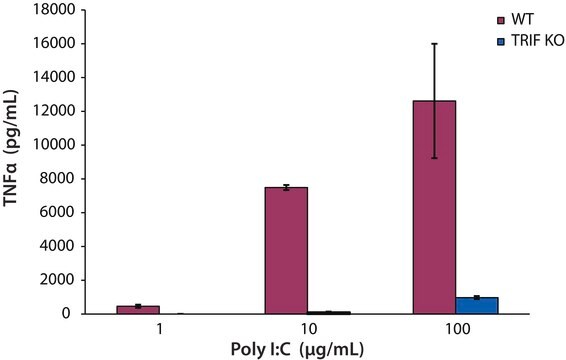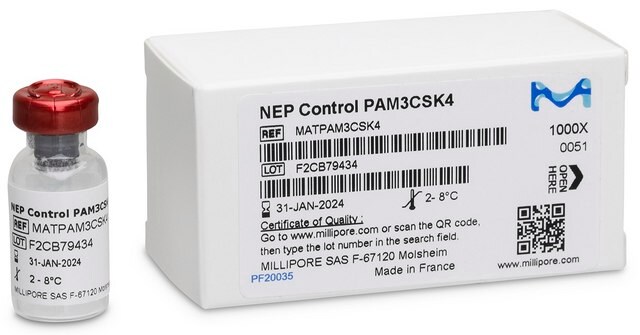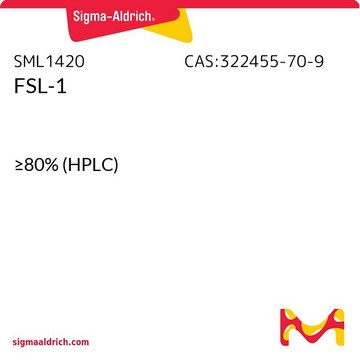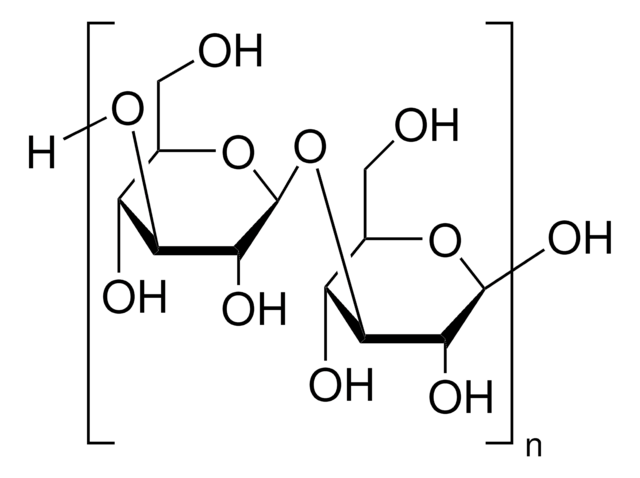Kluczowe dokumenty
670820
Pam3-Cys-OH
≥98.0% (TLC), for peptide synthesis
Synonim(y):
N-α-Palmitoyl-S-[2,3-bis(palmitoyloxy)-(2RS)-propyl]-L-cysteine, Palmitoyl-Cys((RS)-2,3-di(palmitoyloxy)-propyl)-OH
About This Item
Polecane produkty
Nazwa produktu
Pam3-Cys-OH, ≥98.0% (TLC)
Próba
≥98.0% (TLC)
przydatność reakcji
reaction type: solution phase peptide synthesis
Zastosowanie
peptide synthesis
ciąg SMILES
CCCCCCCCCCCCCCCC(=O)N[C@@H](CSCC(COC(=O)CCCCCCCCCCCCCCC)OC(=O)CCCCCCCCCCCCCCC)C(O)=O
InChI
1S/C54H103NO7S/c1-4-7-10-13-16-19-22-25-28-31-34-37-40-43-51(56)55-50(54(59)60)48-63-47-49(62-53(58)45-42-39-36-33-30-27-24-21-18-15-12-9-6-3)46-61-52(57)44-41-38-35-32-29-26-23-20-17-14-11-8-5-2/h49-50H,4-48H2,1-3H3,(H,55,56)(H,59,60)/t49?,50-/m0/s1
Klucz InChI
PZFZLRNAOHUQPH-GOOVXGPGSA-N
Powiązane kategorie
Opis ogólny
Kod klasy składowania
11 - Combustible Solids
Klasa zagrożenia wodnego (WGK)
WGK 3
Temperatura zapłonu (°F)
Not applicable
Temperatura zapłonu (°C)
Not applicable
Środki ochrony indywidualnej
Eyeshields, Gloves, type N95 (US)
Wybierz jedną z najnowszych wersji:
Masz już ten produkt?
Dokumenty związane z niedawno zakupionymi produktami zostały zamieszczone w Bibliotece dokumentów.
Klienci oglądali również te produkty
Nasz zespół naukowców ma doświadczenie we wszystkich obszarach badań, w tym w naukach przyrodniczych, materiałoznawstwie, syntezie chemicznej, chromatografii, analityce i wielu innych dziedzinach.
Skontaktuj się z zespołem ds. pomocy technicznej














